 As a passionate hunter, Brillat-Savarin enjoyed traditional midday luncheon trysts or haltes de chasse. he describes the gathering in “Meditation XV” in Physiologie du Gout, or The Psychology of Taste. According to French usage, the halte de chasse is not...
As a passionate hunter, Brillat-Savarin enjoyed traditional midday luncheon trysts or haltes de chasse. he describes the gathering in “Meditation XV” in Physiologie du Gout, or The Psychology of Taste. According to French usage, the halte de chasse is not...
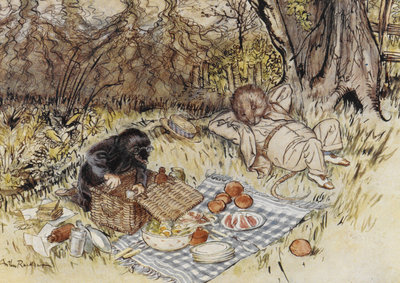 Grahame’s picnic in The Wind in the Willows (1908) is a wonder. What child (or adult) could ever conceive of a picnic for one eating basket full of “cold chicken. ....
Grahame’s picnic in The Wind in the Willows (1908) is a wonder. What child (or adult) could ever conceive of a picnic for one eating basket full of “cold chicken. ....
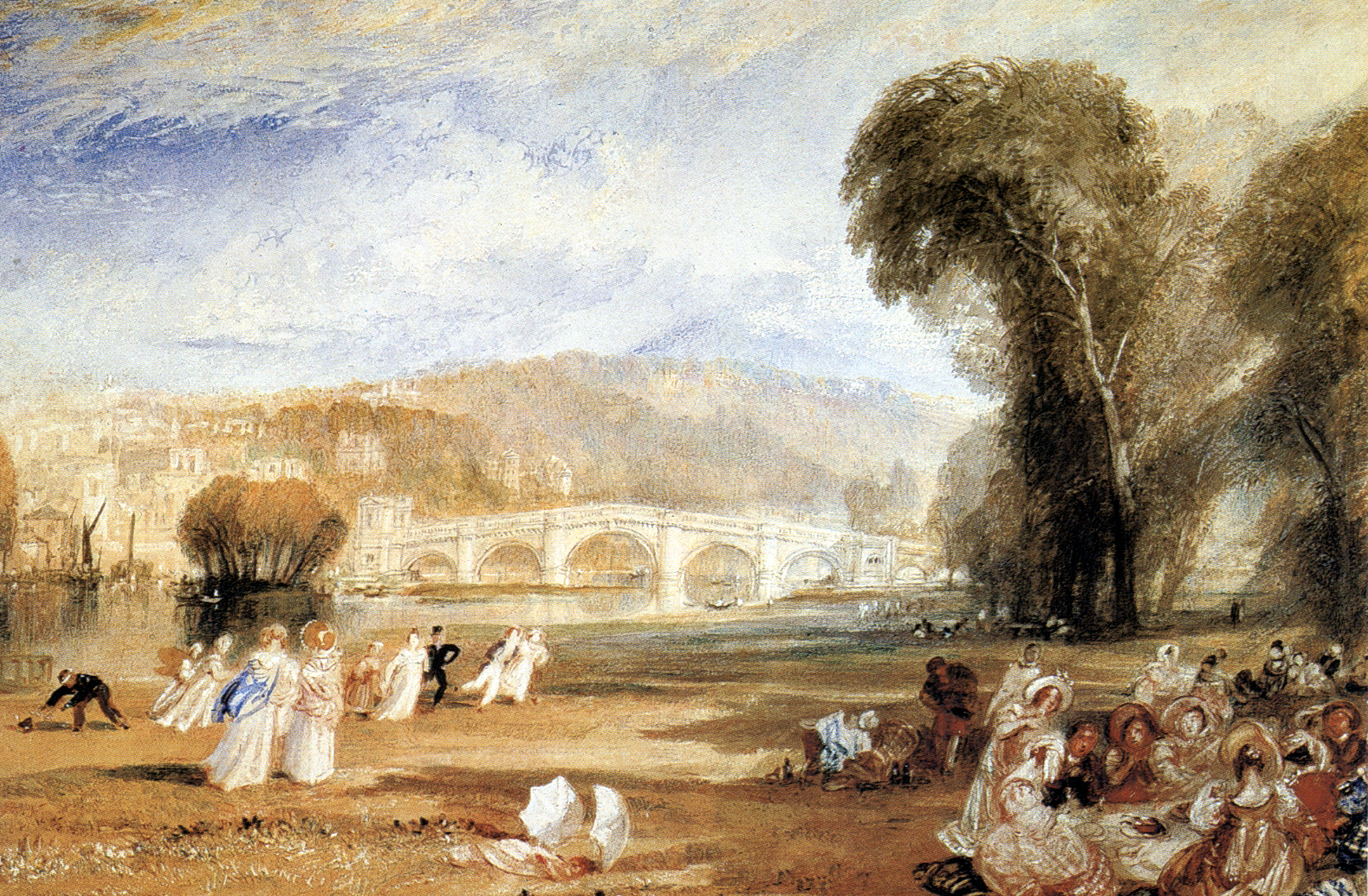 John Ruskin was introduced to Turner’s works when his father gifted him with the watercolor painting Richmond Hill and Bridge, Surrey (1828). According to the British Museum, the original title of the painting was Richmond Hill and Bridge, with a Picnic Party....
John Ruskin was introduced to Turner’s works when his father gifted him with the watercolor painting Richmond Hill and Bridge, Surrey (1828). According to the British Museum, the original title of the painting was Richmond Hill and Bridge, with a Picnic Party....
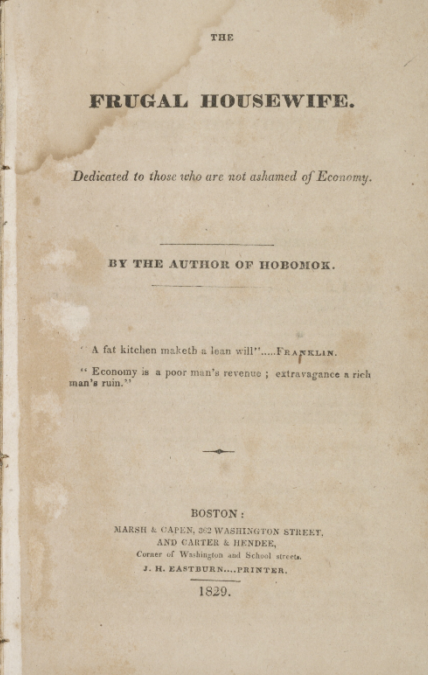 Child’s The Frugal Housewife is among the most popular American cookery and domestic manuals but has no specific recommendations for picnics. The 1830 edition does have a recipe for buffalo’s tongue; “Buffalo’s tongue should soak a day and a...
Child’s The Frugal Housewife is among the most popular American cookery and domestic manuals but has no specific recommendations for picnics. The 1830 edition does have a recipe for buffalo’s tongue; “Buffalo’s tongue should soak a day and a...
 Angelo, London’s most renowned fencing master, was an original Pic Nic. His in Reminiscences of Henry Angelo (1830) is among the few first-hand depictions of the society. Angel explains that “the plan [for the Pic Nics] was derived from a friendly custom...
Angelo, London’s most renowned fencing master, was an original Pic Nic. His in Reminiscences of Henry Angelo (1830) is among the few first-hand depictions of the society. Angel explains that “the plan [for the Pic Nics] was derived from a friendly custom...
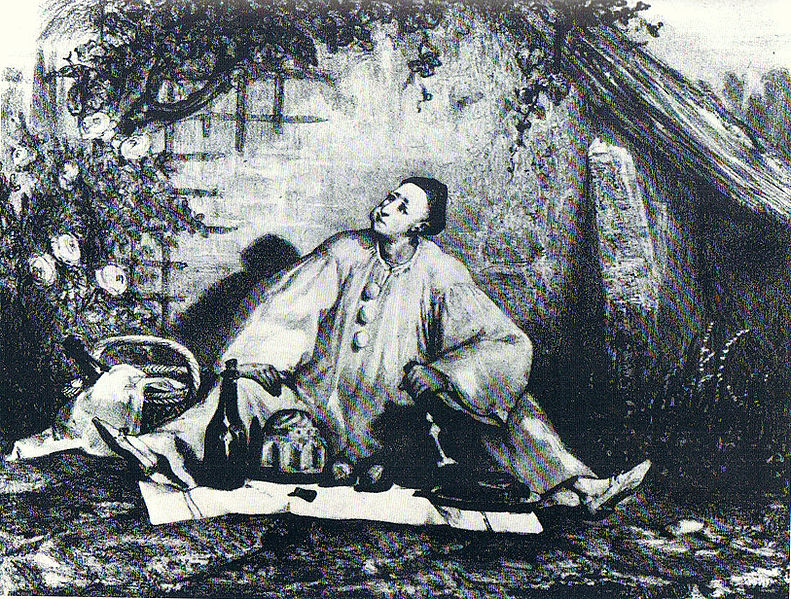 Bouquet’s Le repas de Pierrot, Pierrot’s Dinner, suggests a picnic. The scene depicts the actor Jean-Gaspard Deburau as Pierrot, a star stock character in the Théâtre des Funambules (Theater of the Tightrope Walkers). Pierrot always losses. From the look...
Bouquet’s Le repas de Pierrot, Pierrot’s Dinner, suggests a picnic. The scene depicts the actor Jean-Gaspard Deburau as Pierrot, a star stock character in the Théâtre des Funambules (Theater of the Tightrope Walkers). Pierrot always losses. From the look...
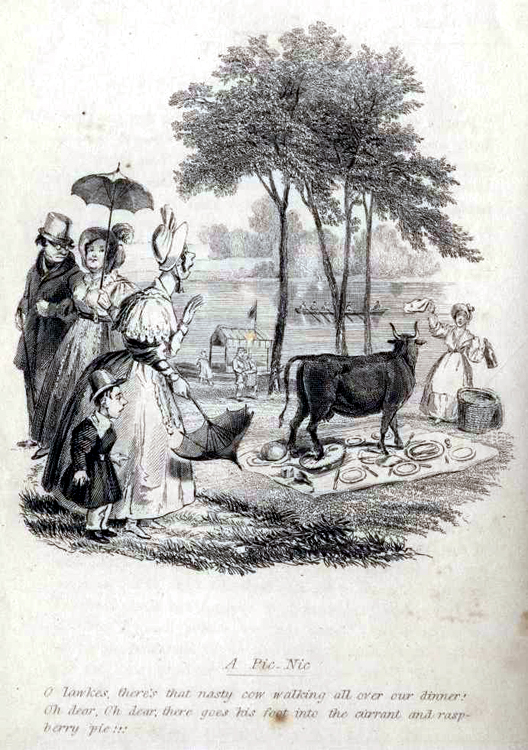 Robert Seymour’s “O lawkes, there’s that nasty cow walking all over our dinner!” (1834-36) Seymour was an illustrator, and cartoonist noted for his wit and humor. For his sketches, as opposed to a political or social cartoons. His preference is...
Robert Seymour’s “O lawkes, there’s that nasty cow walking all over our dinner!” (1834-36) Seymour was an illustrator, and cartoonist noted for his wit and humor. For his sketches, as opposed to a political or social cartoons. His preference is...
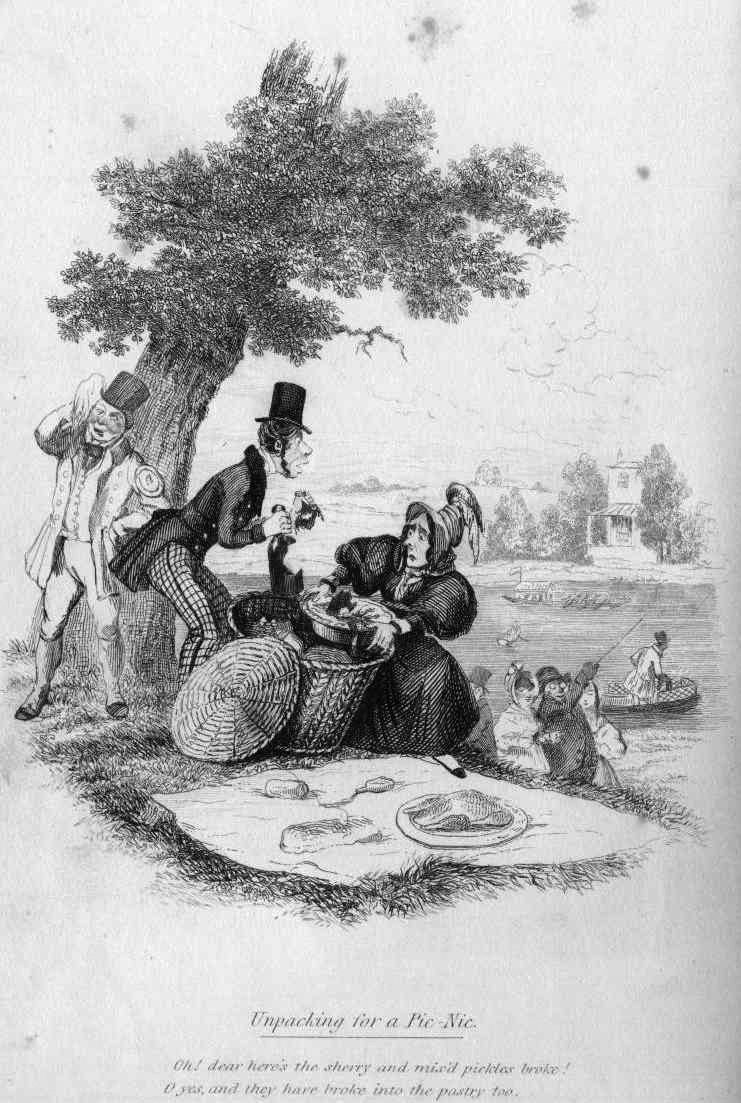 Seymour’s picnics sketches show a keen awareness of their potential for humor and satire. Especially if they’ve gone wrong. Unpacking for a Pic-Nic, for example, pokes fun at what breaks in a basket, as the legend makes amply clear, “Oh! Dear,...
Seymour’s picnics sketches show a keen awareness of their potential for humor and satire. Especially if they’ve gone wrong. Unpacking for a Pic-Nic, for example, pokes fun at what breaks in a basket, as the legend makes amply clear, “Oh! Dear,...
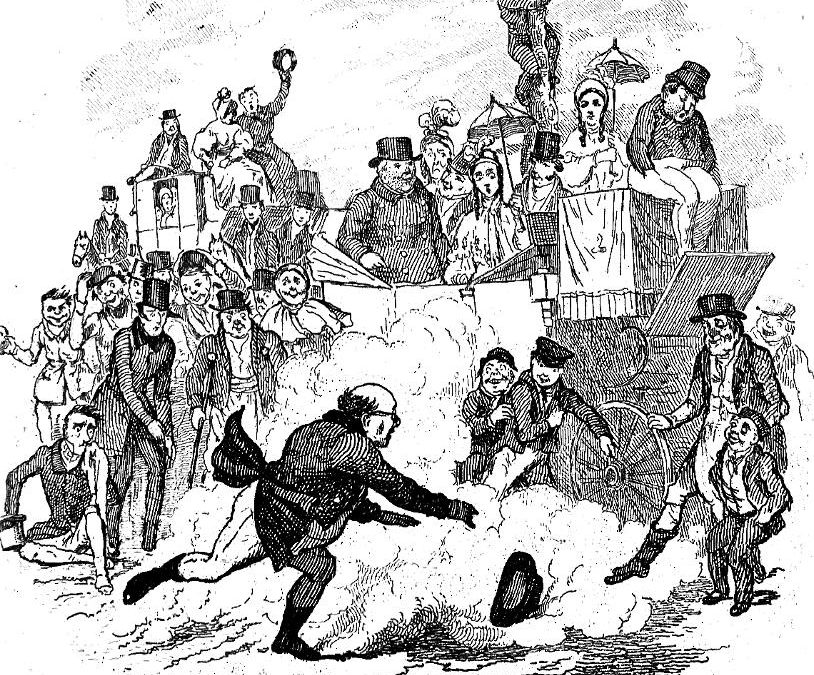 Dickens does not use the word picnic. But when the Wardles have lunch in their barouche, it’s an unmistakably a picnic: “In an open barouche, the horses of which had been taken out, the better to accommodate it to the crowded place, stood a stout old...
Dickens does not use the word picnic. But when the Wardles have lunch in their barouche, it’s an unmistakably a picnic: “In an open barouche, the horses of which had been taken out, the better to accommodate it to the crowded place, stood a stout old...
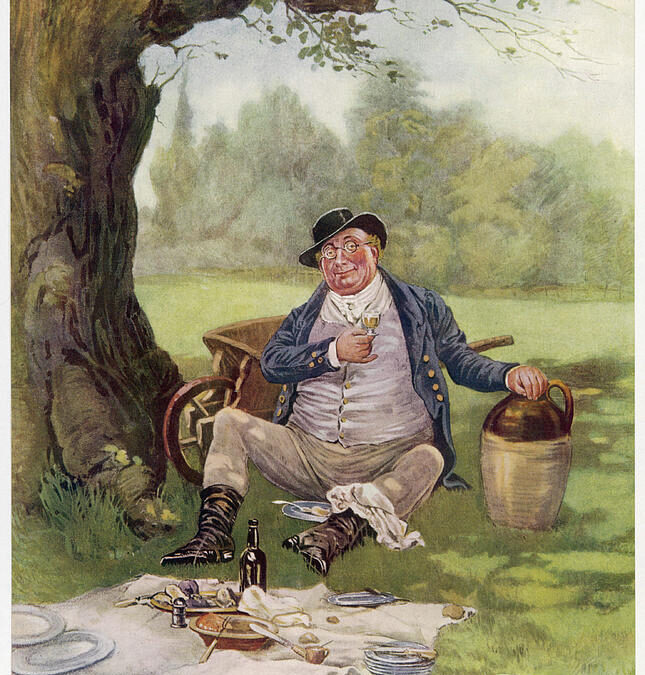 “A Pleasant Day With An Unpleasant Termination” is Dickens’s comic send-up of the Halt on the Hunt, particularly Jean-Anthelme Brillat-Savarin’s The Physiology of Taste, or Meditations on Transcendental Gastronomy (1825). Much of the comedy...
“A Pleasant Day With An Unpleasant Termination” is Dickens’s comic send-up of the Halt on the Hunt, particularly Jean-Anthelme Brillat-Savarin’s The Physiology of Taste, or Meditations on Transcendental Gastronomy (1825). Much of the comedy...











